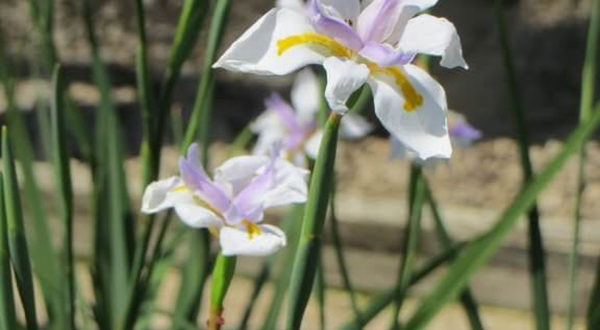Common Name: African Iris
Scientific Name: Dietes bicolor, Dietes vegeta
Type of Plant: Perennial
Description: This clumping, robust perennial ornamental grass has stiff leaves radiating up and out in a fan shaped pattern. The flower spikes are topped with gorgeous 3″ white or yellow blooms. The flowers are produced sporadically throughout the year.
Mature Size: 2-3′ tall x 3-4′ wide.
Blooms: Flowering tends to occur in bursts at 2-week intervals, hence another common name: Fortnight Lily
Fruit: No
Climate Requirements: African Iris performs best in full sun or part shade, in moderately fertile, moist, well-drained soils. Best flower production occurs in full sun, but light afternoon shade is welcomed. Thrives with regular moisture but will perform satisfactorily in poor soil with infrequent watering once established.
Care Requirements: Remove seed pods to promote additional blooms. Flower stems should not be removed after flowering. Clip off any leaves that die. Self-sows freely; deadhead if you do not want volunteer seedlings next season. No serious insect or disease problems. Watch for crown root, root rot, rust, scale and nematodes.
Spacing: Space plants 36″ apart
Water Needs: Low, Average
Maintenance: Low
Special Uses/Attributes: African Iris can be useful in the landscape along woodland borders, in mass plantings, in containers or planters, as a border or edger, around decks, swimming pools, and other outdoor living areas, as an accent, under a shade tree, as a groundcover, in landscape beds or islands or in small groupings and also in rock or xeriscape gardens, theme gardens, cottage gardens, butterfly gardens or perennial gardens. It is fairly drought tolerant and moderately salt tolerant.
Florida Native: No

